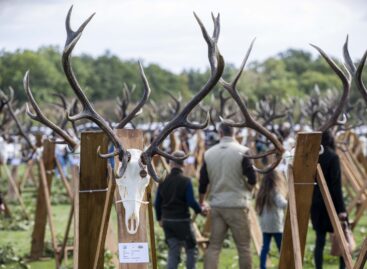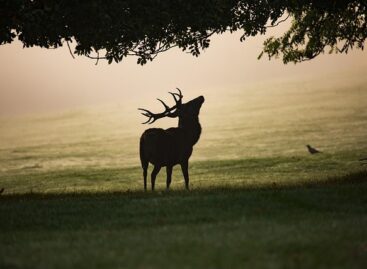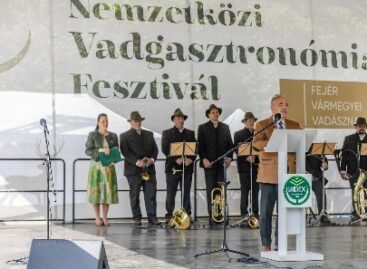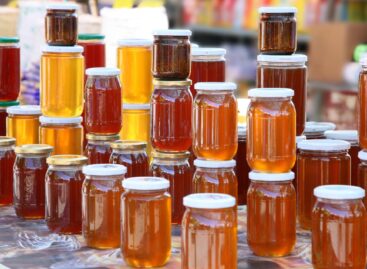The country’s wildlife is a national treasure
The government considers Hungary’s wildlife as an important renewable natural resource, which is a national treasure, so it needs to be protected, but it also needs to be managed in a professional and sustainable manner, the Minister of Agriculture said in his welcoming speech on Saturday in Lakitelek, on the National Hunting Day.
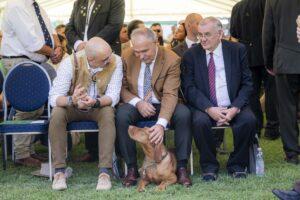
(Photo: AM/Csaba Pelsőczy)
At the event held in the Hungarikum Liget, István Nagy said: the government is aware that wildlife damage and damage caused to wildlife are of central importance in the sectoral relations of wildlife management, which are the most sensitive source of conflict in terms of the harmonization of nature management sectors. At the same time, it is necessary to achieve that the productivity of agriculture and the competitiveness of Hungarian farmers increase, while at the same time agricultural production, which creates the security of the European and Hungarian food supply, and the production of quality food, becomes a profitable and socially recognized activity – he added. The goal is also to significantly improve the state of the country’s environment, the renewal of its natural resources, and thus the situation of wildlife management, he said.
The minister emphasized that hunting is key to maintaining a healthy game population with good genetic value
With this in mind, the agricultural administration considers professional hunters as partners, who spare no time and energy to visit the hunting grounds all year round, their role is indispensable in sustainable and professional game management, he said. At the same time, István Nagy also told those entitled to hunt to accept it: a significant reduction in the number of the locally overgrown big game population cannot be ignored. He emphasized that during the regulation of the large game stock, instead of a quantitative approach, efforts should be made to create a smaller but better quality game stock. He also reported that the herding of big game in the hunting areas is continuous, and in this regard the number reduction goal can be considered uniform nationwide. Therefore, it is a fundamental requirement to fully comply with the requirements for felling set in the annual wildlife management plan – he added. By increasing the exploitation of big game, game damage can be reduced, sales revenue from game meat and trophies can increase, and social conflicts caused by overstocked game can be alleviated, said the head of the ministry. According to his information, in the 2023-2024 game management year, HUF 39.6 billion in sales was combined with HUF 35.9 billion in costs, so the sector realized a profit of about HUF 3.7 billion. During this period, 343,000 big game were killed in 1,449 hunting areas, a total of 537,000 hares and pheasants were used, and 72,970 trophies were awarded. The internal proportions did not change significantly compared to previous years: roe deer antlers accounted for 58 percent, red deer antlers for 29 percent, fallow deer antlers for 8 percent, wild antlers for 3 percent, and mouflon snails for 2 percent of all judged trophies – he listed.
István Nagy emphasized that close cooperation between those entitled to hunt and farmers is necessary to prevent damage to game
If the damage does occur, he considers the agreement to be the most expedient, so that the situation does not get worse and as few cases as possible go to court. The Ministry of Agriculture also plans to review the legal framework for damage caused by huntable animals that appear or are present in the interior. Furthermore, the plans include the development and implementation of the Wildlife Impact Monitoring System, he said. Turning to the legislative environment, he reported that legislative work continued this year. He called encouraging and facilitating the fulfillment of increased stock utilization tasks an important objective. As an example, István Nagy mentioned the specification of regulations for the establishment and expansion of permanent fences, the definition of regulations for the operation, operation and sublease of game parks, as well as the creation of conditions for the use of the electronic registration book. He considers the main result of the changes to be that they have reduced the bureaucracy that plagues hunters. As an important step in the direction of digitization, the possibility of using the electronic registration book was created. The rules for storing hunting weapons have been simplified. Youth hunting was introduced in order to raise the hunting supply – the Minister of Agriculture listed.
Sándor Lezsák, the Fidesz member of parliament for the region, spoke about the fact that wildlife management has an annual income of about HUF 200 billion, but it also has a lot of expenses
The 1,400 game management units must be maintained, the supply of 3,000 professional hunters must be taken care of, and the fences along the roads or next to the agricultural fields must be built and maintained. In addition, winter and early spring fodder supply for game must be ensured. Despite this, only three or four counties show a financial loss for wildlife management every year, while the vast majority show a profit – he pointed out. As an example, he mentioned that the Bács-Kiskun county’s wildlife management financial balance has been positive for a long time. Zoltán Kovács, editor-in-chief of Nimród Vadászújság, and László Jámbor, president of the National Hungarian Hunting Chamber, also spoke at the event.
MTI
Related news
Hungarian wildlife management is at the forefront of the world
🎧 Hallgasd a cikket: Lejátszás Szünet Folytatás Leállítás Nyelv: Auto…
Read more >The deer-rooing season has begun in Hungarian forests
🎧 Hallgasd a cikket: Lejátszás Szünet Folytatás Leállítás Nyelv: Auto…
Read more >The amount of domestic game meat sold and intended for own consumption in 2024/25 was 13 thousand tons
🎧 Hallgasd a cikket: Lejátszás Szünet Folytatás Leállítás Nyelv: Auto…
Read more >Related news
KSH: industrial producer prices in November 2025 were on average 2.7 percent lower than a year earlier and 0.3 percent lower than the previous month’s prices
🎧 Hallgasd a cikket: Lejátszás Szünet Folytatás Leállítás Nyelv: Auto…
Read more >Employment at 4.5-year low
🎧 Hallgasd a cikket: Lejátszás Szünet Folytatás Leállítás Nyelv: Auto…
Read more >This is how we eat honey in 2026
🎧 Hallgasd a cikket: Lejátszás Szünet Folytatás Leállítás Nyelv: Auto…
Read more >

